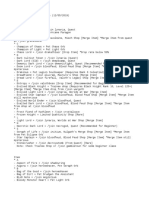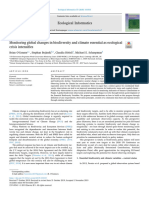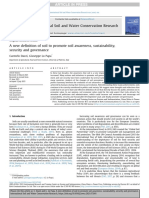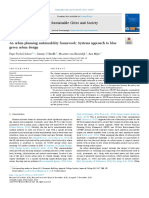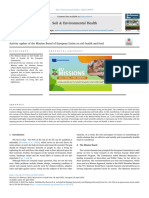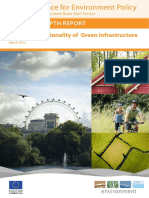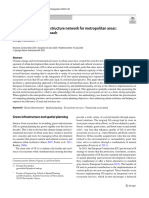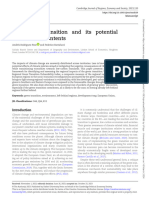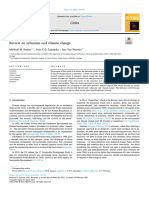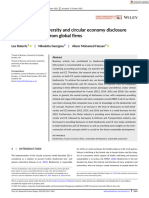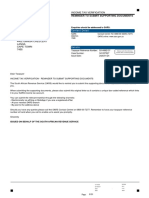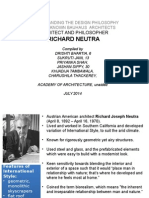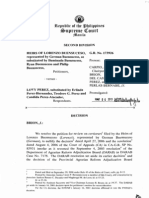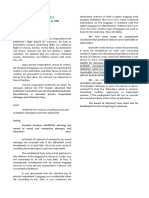Contents
lists
available
at
Soil
Security
journal
homepage:
Soil
security
as
a
roadmap
focusing
soil
contributions
on
sustainable
development
agendas
Johan
Bouma
Wageningen
University,
the
Netherlands
Keywords:
Ecosystem
services
Soil
health
Modeling
Stakeholders
Carbon
capture
Long
a
rather
abstract
concept,
sustainable
development
has
since
2015
been
dened
by
the
United
Nations
in
terms
of
goals
(SDGs),
specied
by
targets
and
indicators.Soils
play
an
important
role
in
several
land-related
SDGs
by
their
contribution
to
ecosystem
services
that,
in
turn,
contribute
to
biomass
production
(SDG2),
water
quality
(SDG6),
climate
mitigation
(SDFG13)
and
biodiversity
preservation
(SDG15).
These
goals
have
been
adopted
by
the
European
Union
when
dening
their
Green
Deal.
However,
sustainable
development
will
only
be
achieved
when
stakeholders
adopt
appropriate
management
measures
that
result
in
a
satisfactory
level
of
all
four
ecosys-
tem
services.
Adoption,
however,
is
not
only
a
function
of
technical
considerations
but
is
also
highly
affected
by
socioeconomic
and
even
psychological
factors.
The
soil
security
concept
that
considers
both:
“hard
”and
“soft
”criteria,
is
therefore
well
suited
to
act
as
a
roadmap
towards
a
sustainable
future,
focusing
soil
contributions
to
ecosystem
services
and
the
SDGs.
A
storyline
is
proposed
starting
with
connectivity,
dening
interaction
pro-
cesses
among
all
partners
involved
in
the
sustainability
debate,
followed
by
condition,
and
capability
that
can
be
dened
by
a
recently
proposed
quantitative
expression
of
soil
health.
Soil
Capitol
expresses
soil
contributions
to
ecosystem
services
in
nancial
terms
and
thus
contributes
to
connectivity
when
examples
show
that
non-soil
con-
tributions
are
much
more
expensive.
Environmental
laws
and
regulations,
expressed
by
codication,
ideally
link
soil
performance
to
societal
relevance
but
the
tension
between
individual
desires
and
societal
demands
requires
modern
forms
of
connectivity
in
terms
of
willingness
to:
“joint-learning
”,
supported
by
modern
communication
theory.
Following
the
complete
storyline
of
the
5C’s,
as
proposed
by
the
soil
security
concept,
can
make
future
soil
research
much
more
effective
from
a
societal
and
political
point
of
view.
1.
Introduction
Soils
receive
increasing
attention
by
the
international
policy
arena.
For
example,
the
new
research
and
innovation
program:
“Horizon
Eu-
rope
2021–2027
″
of
the
European
Union
with
a
proposed
budget
of
80
billion
€
,
is
based
on
ve
so-called
Missions,
among
them:
”Soil
Health
and
Food
” (
).
These
Missions
have
a
particular
fo-
cus
on:
maximizing
the
impact
of
EU
support
to
research
and
innovation,
demonstrating
its
relevance
for
society
and
citizens
”.
This
new
focus
on
Missions
reects
a
certain
frustration
with
more
traditional
research
that
has,
according
to
EU
politicians,
too
often
remained
invisible
and
there-
fore
irrelevant
to
EU
citizens.
Clearly,
the
research
community
is
being
challenged
to
rise
to
the
occasion.
How
to
proceed
is
no
less
than
an
existential
question,
also
for
the
soil
science
discipline.
Of
course,
the
fact
that
soils
form
one
of
the
topics
of
the
Missions
implies
a
welcome
correction
of
the
fact
that
in
the
past
only
water,
air
and
nature
received
particular
attention
in
environmental
research
while
soils
were
largely
ignored.
This
change
does,
however,
present
a
major
challenge
to
the
soil
science
profession.
This
review
will
argue
that
the
5
C’s
of
the
soil
security
concept
are
an
important
beacon
for
E-mail
address:
the
soil
science
profession
to
face
the
challenge
ahead
for
a
number
of
reasons:
(i)
quantitative
and
reproducible
expressions
for
the
rst
3
C’s:
soil
capability,
condition
and
capital
are
crucial
as
contributions
to
both
effective
interdisciplinary
research
and
to
communication
with
the
policy
arena
and
citizens
at
large;
(ii)
the
last
2
C’s:
connectivity
and
codication
are
essential
elements
to
be
always
added
to
the
rst
three
as
they
will
determine
whether
or
not
research
will
have
relevance
for
society
and
citizens.
So
far,
major
emphasis
in
soil
research
(and
in
many
other
environmental
disciplines)
has
been
on
technical
aspects
as
embodied
for
soils
in
the
rst
3C’s.
But
always
considering
the
complete
5
C’s
as
a
general
research
framework,
would,
in
the
opinion
of
the
author,
be
essential
for
future
soil
research.
This
does,
of
course,
not
exclude
the
possibility
to
focus
basic
research
on
certain
aspects
of
one
of
the
5C’s,
where
existing
knowledge
is
lacking,
but
the
way
in
which
such
research
ts
into
the
overall
picture
should
always
be
considered
and
explained.
The
objective
of
this
paper
is
to
explore
implications
for
future
soil
research
when
executed
in
a
general
context
of
soil
security,
by
dis-
cussing:
(i)
the
overall
research
goal;
(ii)
the
link
with
SDGs.
(iii)
the
role
of
the
5C’s
of
soil
security,
and
(iv)
a
discussion
on
what
could
Received
9
September
2020;
Received
in
revised
form
27
October
2020;
Accepted
29
October
2020
Available
online
6
November
2020
2667-0062/© 2020
The
Author.
Published
by
Elsevier
Ltd.
This
is
an
open
access
article
under
the
CC
BY
license



